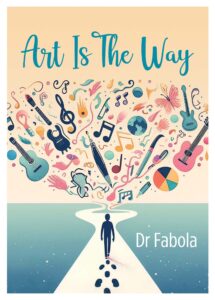
A few days ago I read the transcripts of an interview with the renowned author of the Jack Reacher books, Lee Child. When asked about his approach to writing the Reacher books, Child said he doesn’t create a plan before writing. Rather, he creates a scenario and asks: What would Jack Reacher do? And he takes it from there. I found the entire interview interesting, but it was this response that piqued my interest, and it got me thinking about a few things.
The first thing that jumped out at me is that it's okay to not know where the road leads, and it’s okay to take a creative project one step at a time. I’ve previously written about how solving maths problems is like using a lantern to navigate a dark tunnel. The dim light from the lantern illuminates only a small part of your surroundings, enabling you to see just ahead, just enough to take the next step, but no further. On this journey, you don’t know what lies at the end of the tunnel, you don’t even know if there’s an end to the tunnel, you only know what’s right in front of you, and the only way to see further ahead is to take the next step so that the dim light illuminates the path ahead, and on and on it goes. Writing is no different. When you embark on a writing project, it’s nearly impossible to know exactly how it ends. This inability to see the end from the beginning could hold you back because there’s the temptation to want to map out the entire route, the desire to see the end and seek assurance in the destination, before even taking the first step. This is understandable. However, we might be better off embracing this uncertainty and embarking on the journey anyway without a clear idea of where it leads.
Of course, in some cases, there may be a clear destination in sight, and there’s nothing wrong with heading towards that destination. However, it behoves us to embrace flexibility and be willing to modify the route, because as we proceed on the journey, we may pick up new information that could make us rethink the destination. Incidentally, this is the approach sometimes adopted by Lee Child’s brother, Andrew, also a successful author in his own right, and a collaborator on the last few Reacher novels. Andrew Child was also a part of the interview as mentioned above, during which he shared that unlike Lee, who favours writing without plotting beforehand, he favours some planning to guide his writing. One might think these two approaches are opposites and would make it difficult to collaborate on a novel. The brothers even alluded to experiencing this in the early days of their collaboration. However, the challenges were easy enough to overcome because the brothers were flexible enough in their approaches.
This leads me to the next point: there’s no right way to make art, and there’s no blueprint for creativity. Creativity is all about going where art takes you, it’s about being willing to go with the flow. Sure, there are techniques, principles, and practices that may help you get started, elevate the quality of your work, or increase the quantity of your output. But at the end of the day, there’s no substitute for being true to yourself and doing justice to the creative content in your heart. Whether you’re more comfortable writing without a plan or writing with a pre-planned plot, the important thing is to write and to go where the writing takes you. In this vein, I’m reminded of Neil Gaiman’s advice, when asked how to write a story. He replied:
“Write down everything that happens in the story, and then in your second draft make it look like you knew what you were doing all along.” - Neil Gaiman
This sounds like solid advice to me. Just as in all aspects of life, creative projects are full of unknowns. A writer poised to work on a new story faces a whole bunch of questions such as where the story ends, how it’ll take shape, what happens at every turn, where and when the plot twists and turns, and much more. If I may adapt Gaiman’s advice, I’d reframe it into a two-step approach: 1. Lay out all the pieces of the puzzle, and 2. Move them around until they fit together. This seems like a good enough approach to navigating the unknown, wouldn’t you say?
Thank you for reading thus far. This is just a note to say I’ll be taking a little break for the easter holidays. The next post will be released on Sunday 14th April.

P.S.: My debut non-fiction book, Art Is The Way, and my middle-grade novella, A Hollade Christmas, are out everywhere now. You can get them in all good bookstores and from all major online vendors.